Adromiscus: types and care at home

Adromiscus is a unique plant from the fatty family. Brought from the territory of Southeast Africa. From the Greek literal translation - a thick trunk. Adromiscus is used to create compositions both in a home pot and on a personal plot. Consider the features of this plant, and also analyze what kind of care it needs.
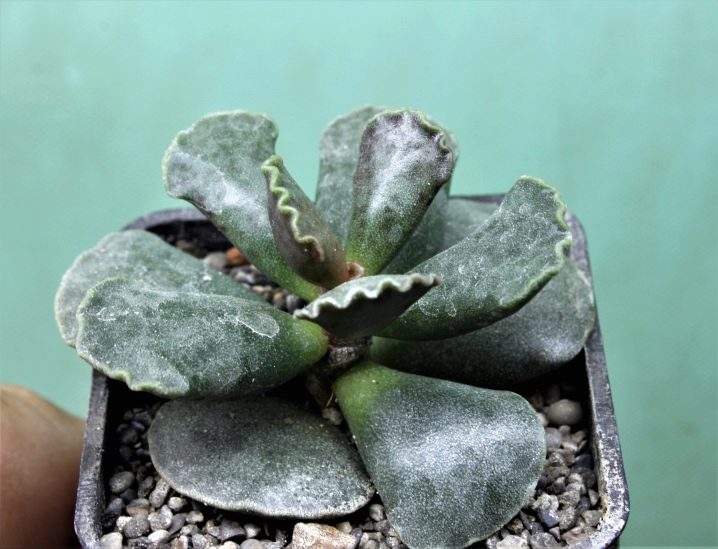
Peculiarities
It is characterized as a short shrub or herb with a thick stem. Its leaves are both rounded and pointed. They can be fluffy or smooth. The greens are fleshy, monochromatic or covered with brown spots. And also the plant is distinguished by its light brown aerial roots. Adromiscus pleases its mistresses with flowers. To do this, he releases an arrow, which after a few days becomes covered with a spike-shaped inflorescence of white or pink color.
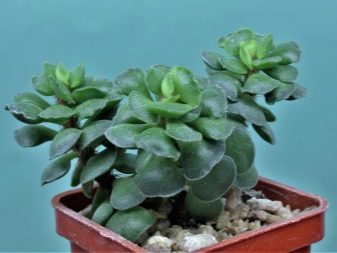
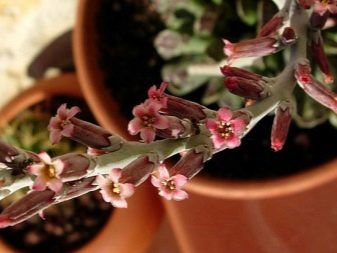
Varieties
In their natural habitat, scientists count up to 70 species of adromiscus. Not everyone grows at home. The most commonly cultivated varieties are:
- Cooper;
- comb;
- spotted;
- pelnitsa;
- grooved;
- mariana.
Let's take a closer look at each name, consider the features of growing.
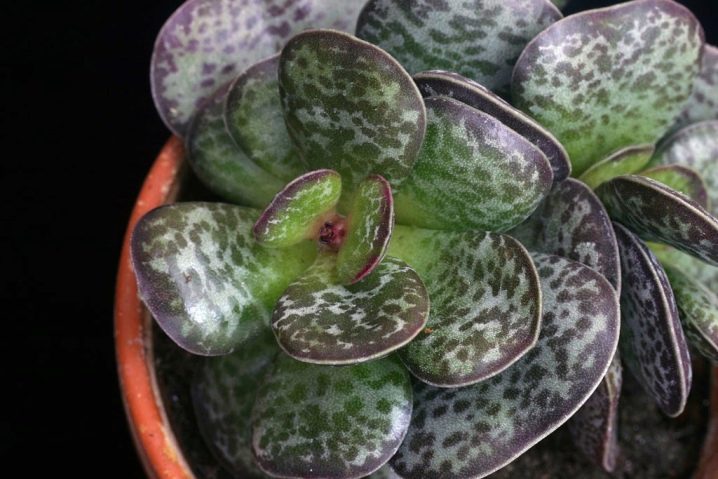
Cooper
In another way it is called copper. This is the most common type of adromiscus, which is also considered unpretentious to grow. It is small, up to 10 cm high, with a short stem that branches strongly. Green leaves are shiny, smooth, can be evenly colored or have red-brown spots that appear after sun exposure. The edge is slightly wavy, reaching 5 cm in length.
The inflorescence is represented by an ear; tubular flowers up to 1.5 cm are located on it. Fused red petals at the edges can be white, pink or purple.
Cooper is a very light-loving plant that tolerates heat and drought for a long time. The best place for him is the southern windows of the house. The plant perfectly withstands temperatures of + 25.30 ° C.
But the frost may not survive, although some growers note frost resistance down to -7 ° C. In no case do not over-wet the soil in the pot - this often leads to the death of the plant.

Try to water the adromiscus after the soil is completely dry. Do not let water get on the leaves, as this causes them to rot. It is very important to apply fertilizers on time. For a Cooper, a mineral supplement with a low salt concentration is suitable no more than 1 time per month.
Comb
And also this adromiscus is called kristatus. This is a small plant, the leaves of which are collected in a rosette, reaches a height of 15 cm. A distinctive feature of this species is the stems that stand at the beginning of growth, and then sag and crawl along the ground, overgrown with aerial roots.
The leaves are shaped like an inverted triangle up to 4.5 cm long, up to 2.5-3.0 cm wide, with a wavy edge, endowed with villi. The inflorescence looks like a spike covered with small white-green flowers, with a pink edging along the edge of the petal.
Crested adromiscus is also thermophilic. Good growth requires temperatures up to + 30 ° C, but at the same time it can withstand frosts down to -1 ° C.

Spotted
It is a shrub up to 5-7 cm high with few branches, rounded or oval leaves of a dark green color with red spots.It blooms with red-brown flowers, forming a raceme inflorescence.
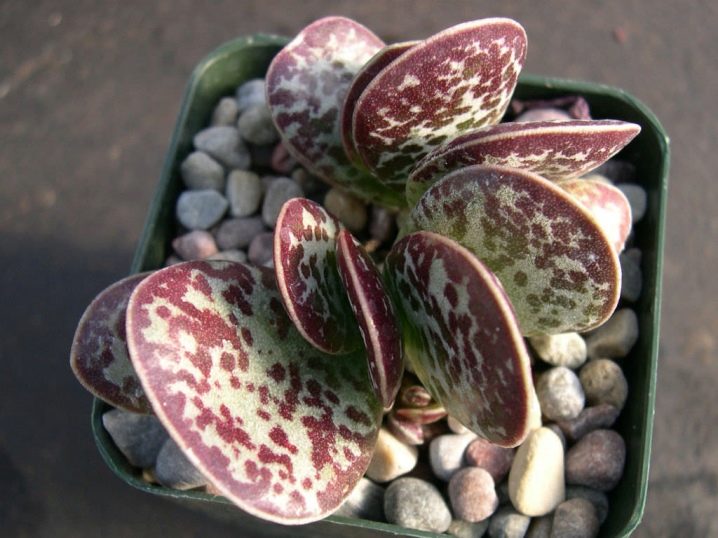
Pelnitz
A low-growing plant, reaching a height of about 10 cm. Its trunk does not have branching, it is overgrown with light brown aerial roots. The leaves are narrow at the base, becoming much wider at the top. The flowering stem can be up to 40 cm long. The flowers themselves are inconspicuous, green in color.
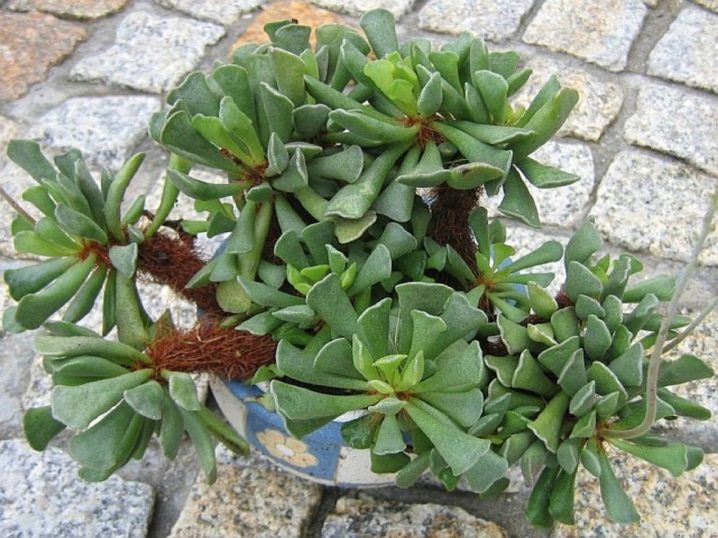
Grooved
The name of this adromiscus is derived from the characteristic groove located on the clavate green leaves at the edge. The leaves themselves are rough, thick, up to 4 cm long and 2.5 cm high.
During growth, adromiscus becomes covered with aerial roots, which turn brown over time. The flower stem is 25 cm long, covered with pink buds on a pale stalk.
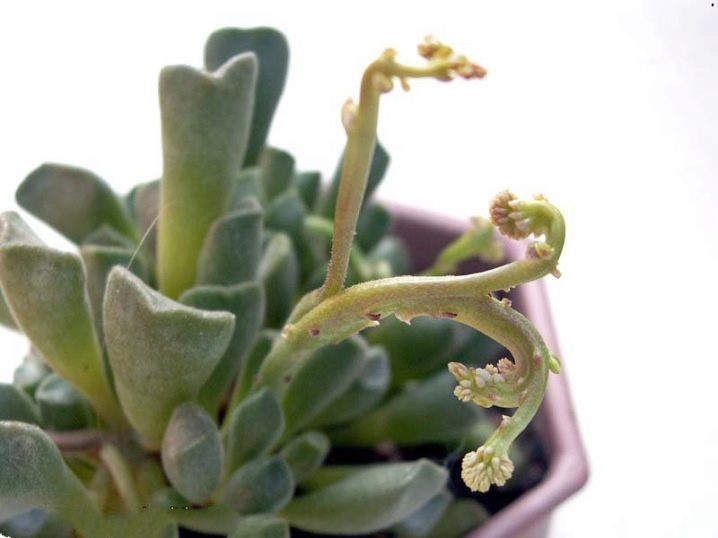
Mariana
It is the most versatile species of adromiscus, at the same time incredibly beautiful. It is a succulent with thick stems up to 5 mm in diameter and 1-2 cm long. Leaves are voluminous up to 20 mm wide and 4 cm long, ovoid or elliptical, pale green in color with a wedge-shaped base. A red tint appears at the top of the leaf in bright light, which gives this plant a special charm. Their texture is varied, it can be both smooth and bumpy.
The inflorescence is represented by a simple panicle with white flowers. One of the peculiarities of the species is its slow growth.
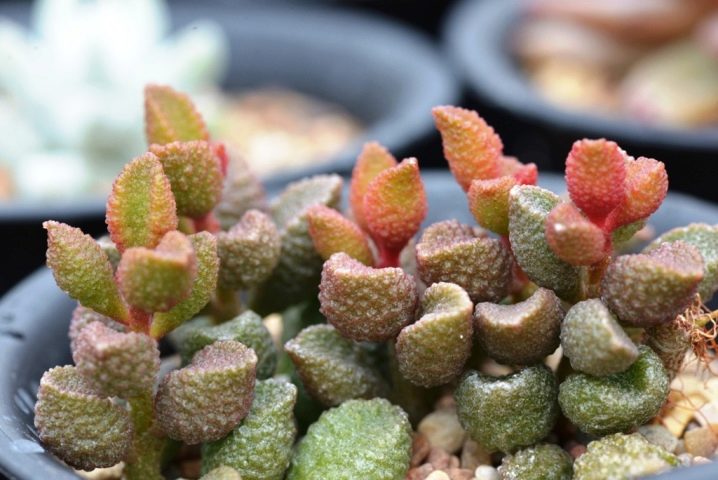
Conditions of detention
In order for adromiscus to delight you as long as possible, you must observe several recommendations on its content.
- All species need bright sunlight, are not afraid of direct rays.
- Since the succulent is native to Africa, for comfortable growth they need a temperature regime of +35 to + 30 ° C in the summer. If the temperature is too high, ventilate the room more often. For the winter, conditions can be created up to + 10.15 ° C. At the same time, do not allow frost, which can lead to the death of the plant.
- Adromiscus does not require high humidity, you should not spray it. In many species, the leaves begin to rot when exposed to water.
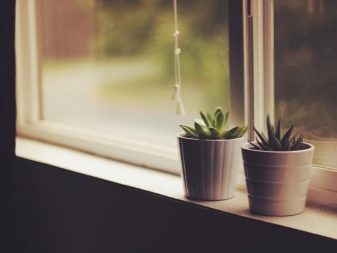
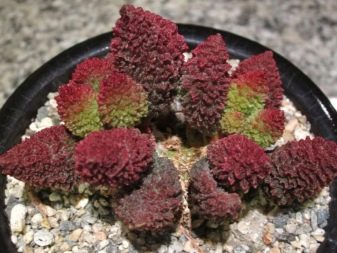
How to care?
Stick to watering in moderation. Succulents are very resistant to drought and do not tolerate constantly wet soil at all. However, do not allow the soil to dry out, as this can lead to disease. In winter, watering should be very rare, reduce water procedures from the beginning of autumn. Use water at room temperature that has been previously settled.
Fertilizers are applied in spring and summer once a month. Choose a food that is low in minerals. It is best if it is a special composition for succulents. In the autumn-winter period, fertilization should be stopped.
Adromiscus transplant is carried out only as a last resort. Favorable time is autumn. Choose a small pot for planting. If you want to create a composition, consider the number and size of flowers so that everyone has enough space and sunshine. The primer is easy to find in the store. In the absence of such for succulents, you can replace the soil for cacti. At the bottom of the pot, drain the expanded clay.
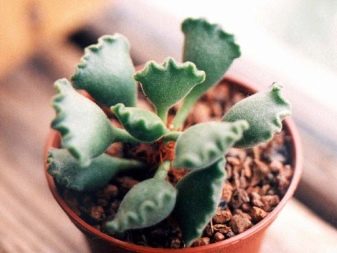
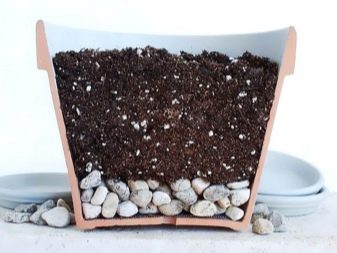
Reproduction
The most common way of reproduction in a domestic environment is cuttings. Leaves are used, for which they are broken off from the main plant, dried for several hours. Then they are stuck in wet sand or vermiculite. But you can also use cactus soil.
The rooting process lasts about 4 weeks, after which the succulent is transplanted according to all the rules.
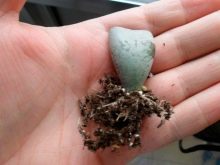
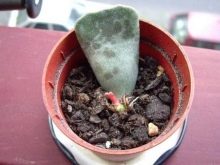
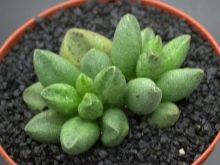
Diseases and pests
The main pests of adromiscus are aphids, spider mites and mealybugs. In order to rid your pet of parasites, move it away from other plants for a while. In the future, the tactics are different.
Aphid
White aphids are most often found on home flowers. It punctures the stem and sucks out the sap of the plant, making it weakened. To combat aphids, folk remedies are often useless, so start processing with professional tools:
- "Spark";
- "Neoron";
- Fitoverm;
- "Karate".
It should be remembered that all these products have an unpleasant odor, so there should be no children or animals in the treated room. Be sure to wear protective equipment: gloves and a respirator.
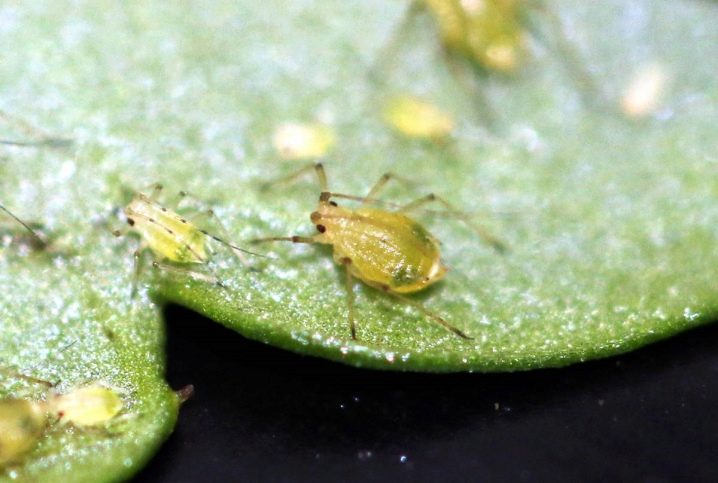
Spider mites
This is a very small insect that is difficult to see with the naked eye. A thin cobweb forms on the plant, on which ticks stick. To combat this pest, use insecticides such as Actellik, Flumite, Skelta. Read the instructions before use. Observe protective measures.

Mealybugs
The second name is hairy lice. On the plant, they can be seen with the naked eye. They feed on the juice of young shoots, causing significant damage. The choice of means for combating this pest is large. Treat every 1-2 weeks for three months.
This will target young larvae that are very sensitive to chemicals.

Diseases
Most often, adromiscus gets sick from care errors. Let's consider the most popular problems.
- The lower leaves turn yellow and die off. These are the natural processes of plant growth and development.
- Rotten leaves. Appears when water gets in during watering.
- Drying foliage or excessive yellowing. These problems are most often the result of frequent watering. And can also occur after sunburn. It is recommended to reduce the frequency of watering and create diffuse light.
- Foliage cracking. The soil is dry.
- Elongated shoots, faded leaves. More often occur with insufficient lighting. Move the succulent plant to the south window. Adjust watering frequency and air temperature.
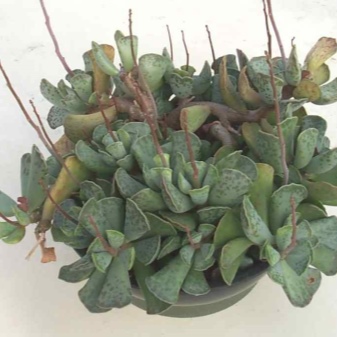
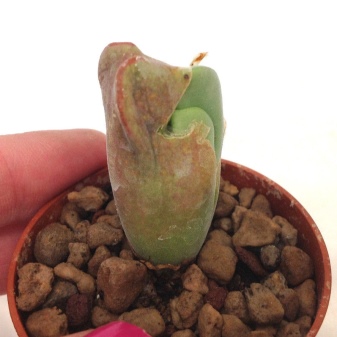
For an overview of adromiscus, see the following video:























































The comment was sent successfully.